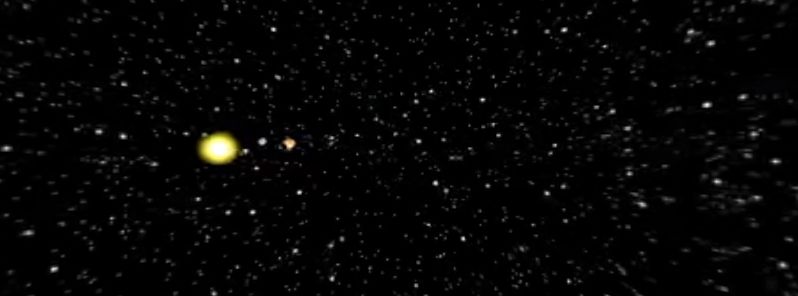Halloween 2015 for skywatchers: Newly discovered asteroid makes close approach to Earth

NASA's scientists discovered a new asteroid on October 10, 2015, using the Panoramic Survey Telescope and Rapid Response System (Pan-STARRS) mounted on Mount Haleakala, Hawai'i. Asteroid was named 2015 TB145, and is expected to make the closest approach to our planet since 2006, on October 31.
Newly discovered asteroid is expected to make a flyby on October 31, 17:18 UTC, at about 1.3 lunar distances from the Earth, which is equivalent to approximately 499 000 km (310 000 miles). The object is estimated to be between approximately 300 and 470 m (984 to 1 541 feet) in diameter. The asteroid's encounter velocity is about 126 000 km/h (78 292 mph), which is an unusually high speed, according to NASA JPL's report.
2015 TB145's eccentricity values reach 0.86, making it a very eccentric object with a high inclination estimated at approximately 40°. Asteroid's Tisserand parameter, used in astronomy to distinguish between different kinds of planetoid orbits, is showing values of 2.973, suggesting the object might be cometary in nature.
This is the closest flyby since July 2006 when object 2004 XP14 approached our planet at a 1.1 lunar distance (422 400 km or 262 467 miles), and could potentially remain closest for an object of this size until 1999 AN10 flies within 1 lunar distance (384 000 km or 238 606 miles) of Earth, in August 2027.
The scientists are hoping to obtain images of the asteroid at its closest approach with a range resolution of 2m/pixel. This flyby is regarded as an "outstanding scientific opportunity to study the physical properties of this object," and has the potential to contribute to the development of NASA Asteroid Redirect Mission with the goal of early detection and diversion of any celestial object on a collision course toward our planet.
You can also make a contribution to the search for near-Earth celestial bodies, by using NASA's free app, the Asteroid Data Hunter, and monitor the sky with only a telescope and an internet connection.
NASA stated this asteroid poses no danger whatsoever to our planet, as it will swing by on a safe distance.
When observed from Earth, the asteroid will have a relative magnitude less than 10, which means it won't be visible to a naked eye. However, it could well be observed with a reasonably good quality amateur telescope, as it crosses the Orion constellation on October 31. So, amateur astronomers across the globe, this might well be an interesting way to complement your All Hallows' Eve festivities, should your local weather be permitting!
And if you're curious to know what the night sky would look like to us if all the known asteroids in the near-Earth field were visible, see the video below:

Video credit: Scott Manley
Featured image: How the night sky would look like if all the known asteroids in the near-Earth field would be visible to us. Image credit: Scott Manley

Commenting rules and guidelines
We value the thoughts and opinions of our readers and welcome healthy discussions on our website. In order to maintain a respectful and positive community, we ask that all commenters follow these rules:
We reserve the right to remove any comments that violate these rules. By commenting on our website, you agree to abide by these guidelines. Thank you for helping to create a positive and welcoming environment for all.